Preethi Venugopala's Blog, page 17
May 8, 2017
The Creative Woman's Journal from Matrikas
“A good journal entry- like a good song, or sketch, or photograph- ought to break up the habitual and lift away the film that forms over the eye, the finger, the tongue, the heart. A good journal entry ought to be a love letter to the world.” ~ Anthony Doerr
I love journaling. Be it the morning pages, creative journals, dream journals, bullet journals, or reading journals; my journals are close to my heart.
Hence, when I received the Creative Woman's Journal from Matrikas for review as part of the 'scribble your heart away' campaign, I was excited beyond words.
Reason? It is the prettiest journal I have ever owned.
Take a look at it yourself.
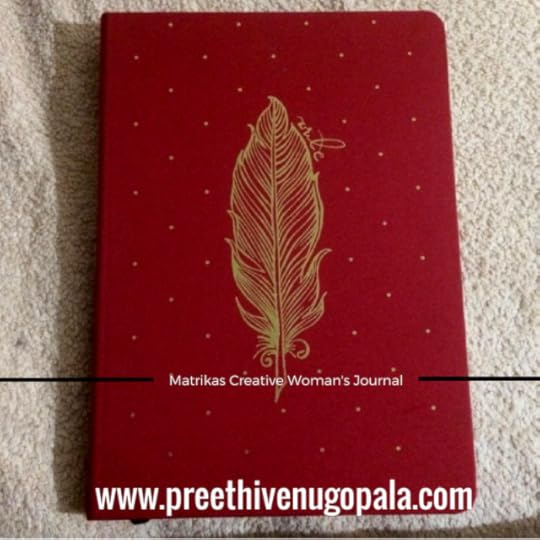
Isn't it gorgeous? The cover has a beautiful golden feather (or quill) with the word 'write' printed to the right side of the feather. Golden dots decorate the entire cover. I was impressed. A Golden quill that urges to write!
Specialities:
1) Adult Coloring Pages:
This beautiful journal has eight adult coloring pages that feature art inspired by nature. Butterflies, flowers, dragonflies and fruits are printed in these pages waiting for you to color them.
2) Blank Pages to doodle
In order to indulge your creativity further, there are blank pages where you are invited to doodle or draw or paint.
3) Personal memoranda page
This is where you can record your personal details and brand the journal as your own.
4) Places to visit page
A page has been allocated to create a list of places you wish to visit.
5) Names and Address page
This page is dedicated to recording details about your important friends along with their address.
6) A paper pouch for keeping important papers with an elastic band for safe locking.
7) Sticker pages
Another wow element in the journal are the stickers that cater to your various lists and moods.My favorite one says,'Do it Now.'
8) Books to be read page.
Note down the list of books that you wish to read in this list.
9) Ruled pages
Scribble away your thoughts in the ruled pages that make it easy to write neatly.
10) An elastic band which acts as a pen holder.
Take a look at this video which takes you into the inside pages of the Creative Woman's Journal.
Do you wish to own this journal? Go to the Matrikas Website and order one for yourself.Trust me, it will be worth every penny.
Or if you are a blogger, hop onto their Facebook Fan page for participating in the 'Scribble your Heart Away' campaign-2 and get a chance to review the journal. There are prizes to be won too. Take a look!
 Click to enlargeHurry, the last date to register is May 12th.
Click to enlargeHurry, the last date to register is May 12th.
Disclaimer: I received the product for free from Matrikas. The review is unbiased and is my own opinion about the product.
I love journaling. Be it the morning pages, creative journals, dream journals, bullet journals, or reading journals; my journals are close to my heart.
Hence, when I received the Creative Woman's Journal from Matrikas for review as part of the 'scribble your heart away' campaign, I was excited beyond words.
Reason? It is the prettiest journal I have ever owned.
Take a look at it yourself.

Isn't it gorgeous? The cover has a beautiful golden feather (or quill) with the word 'write' printed to the right side of the feather. Golden dots decorate the entire cover. I was impressed. A Golden quill that urges to write!
Specialities:
1) Adult Coloring Pages:
This beautiful journal has eight adult coloring pages that feature art inspired by nature. Butterflies, flowers, dragonflies and fruits are printed in these pages waiting for you to color them.
2) Blank Pages to doodle
In order to indulge your creativity further, there are blank pages where you are invited to doodle or draw or paint.
3) Personal memoranda page
This is where you can record your personal details and brand the journal as your own.
4) Places to visit page
A page has been allocated to create a list of places you wish to visit.
5) Names and Address page
This page is dedicated to recording details about your important friends along with their address.
6) A paper pouch for keeping important papers with an elastic band for safe locking.
7) Sticker pages
Another wow element in the journal are the stickers that cater to your various lists and moods.My favorite one says,'Do it Now.'
8) Books to be read page.
Note down the list of books that you wish to read in this list.
9) Ruled pages
Scribble away your thoughts in the ruled pages that make it easy to write neatly.
10) An elastic band which acts as a pen holder.
Take a look at this video which takes you into the inside pages of the Creative Woman's Journal.
Do you wish to own this journal? Go to the Matrikas Website and order one for yourself.Trust me, it will be worth every penny.
Or if you are a blogger, hop onto their Facebook Fan page for participating in the 'Scribble your Heart Away' campaign-2 and get a chance to review the journal. There are prizes to be won too. Take a look!
 Click to enlargeHurry, the last date to register is May 12th.
Click to enlargeHurry, the last date to register is May 12th.Disclaimer: I received the product for free from Matrikas. The review is unbiased and is my own opinion about the product.
Published on May 08, 2017 05:38
April 29, 2017
Zodiac Signs and Writers
Long ago during a summer break from school, I came across a small book which predicted that according to my birth star, I would become someone who will make a career using words.
When I told this to my family, they chorused I would become a lawyer. Wasn’t I an expert at winning arguments at home?
But God had different ideas for me. I became a blogger and writer.
 Image source
Image source
I believe in all things esoteric. Zodiac signs declare that the movement of the celestial bodies is closely related to human characteristics and behavior. ‘As above, so below’.
I am fascinated by them. I find they are almost accurate representations of persons as far as my experiences go.
I found this interesting list on the internet where writers are classified according to their Zodiac signs.
According to this list, I belong to the category of ‘The Haunted Mythologist’.
I have many eminent authors like Sylvia Plath, Neil Gaiman, Fyodor Dostoevsky, John Keats, Chinua Achebe and Margarette Atwood for the company. What a blessed list!
Apart from such fun classifications, writers can use the Zodiac list to create character sketches.
While I was writing my debut novel, in my first draft, I had written the male lead as a September born.
But as the story required his birthday to fall in the month of July when the female lead visits his place, I changed his birthday to July 3 in the second draft.
Then while researching for adding details to my characters, I came across a Zodiac description of Cancer men (men born between June 21-July22).
I was completely shocked as the characteristics I had described in my hero was typical of a Cancer man. That too considering that I had completed writing the first draft of the story assuming he was born on a different date.
I used my research in my book also which was loved by many readers who wrote to me about it.
After this discovery, I check the compatibility of the star signs of my protagonists after I assign them their fictional date of births.
If they are not compatible, they need to change their birthdays without delay. (*Wink)
I believe the characters we write about in our stories do exist somewhere. The infinite source from where we writers get our ideas is, in fact, the supreme consciousness.
Hence, we are tapping into something divine, which becomes solid and 3-dimensional through the words that we use to narrate our stories.
Do you believe in Zodiac Signs?
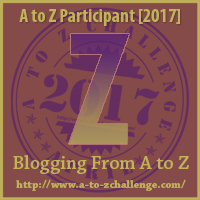
During this A-Z April Challenge, I am exploring the A-Z journey of writing a Novel with examples from Literature.
The Letter of the day is Z
Linking this post to Blogging from A-Zand Blogchatter
Have you read the Letters A, B, C, D, E, F, G, H I J K L M
When I told this to my family, they chorused I would become a lawyer. Wasn’t I an expert at winning arguments at home?
But God had different ideas for me. I became a blogger and writer.
 Image source
Image sourceI believe in all things esoteric. Zodiac signs declare that the movement of the celestial bodies is closely related to human characteristics and behavior. ‘As above, so below’.
I am fascinated by them. I find they are almost accurate representations of persons as far as my experiences go.
I found this interesting list on the internet where writers are classified according to their Zodiac signs.
According to this list, I belong to the category of ‘The Haunted Mythologist’.
I have many eminent authors like Sylvia Plath, Neil Gaiman, Fyodor Dostoevsky, John Keats, Chinua Achebe and Margarette Atwood for the company. What a blessed list!
Apart from such fun classifications, writers can use the Zodiac list to create character sketches.
While I was writing my debut novel, in my first draft, I had written the male lead as a September born.
But as the story required his birthday to fall in the month of July when the female lead visits his place, I changed his birthday to July 3 in the second draft.
Then while researching for adding details to my characters, I came across a Zodiac description of Cancer men (men born between June 21-July22).
I was completely shocked as the characteristics I had described in my hero was typical of a Cancer man. That too considering that I had completed writing the first draft of the story assuming he was born on a different date.
I used my research in my book also which was loved by many readers who wrote to me about it.
After this discovery, I check the compatibility of the star signs of my protagonists after I assign them their fictional date of births.
If they are not compatible, they need to change their birthdays without delay. (*Wink)
I believe the characters we write about in our stories do exist somewhere. The infinite source from where we writers get our ideas is, in fact, the supreme consciousness.
Hence, we are tapping into something divine, which becomes solid and 3-dimensional through the words that we use to narrate our stories.
Do you believe in Zodiac Signs?

During this A-Z April Challenge, I am exploring the A-Z journey of writing a Novel with examples from Literature.
The Letter of the day is Z
Linking this post to Blogging from A-Zand Blogchatter
Have you read the Letters A, B, C, D, E, F, G, H I J K L M
Published on April 29, 2017 23:10
You Can Become a Published Author
According to statistics, 90% of bloggers aspire to become a published author. Out of that 97% do not finish writing what they begin.
 Image Source
Image SourceIf you have written a novel, congratulate yourself, sit back and bask in the glory. You persisted in chasing your dream while the others were busy being busy. You have become a member of that rare 3% who succeeds in completing their novel.
April A-Z Challenge this time might change this statistic I guess. The percentage of people who are going to emerge as winners are surely going to be very high. People who persist for a whole month, writing every day for a month.
Blogchatter is going to guide the A-Zers registered with them to publish their eBook using their A-Z posts, get it reviewed and market it as well.
A book is born through hours and hours of dedication. There is no short cut.
As Hemingway said, “There is nothing to writing. All you do is sit down at a typewriter and bleed.”
In this era, publishing has become easy with the advent of many self-publishing platforms like Amazon, CreateSpace, Kobo etc, authors are able to find a platform for their stories easily. Get a detailed insight into the various online platforms available here.
Many of the bloggers I know are publishing eBooks based on their A-Z challenge.
Anmol Rawat is planning to terrorize his readers with an A-Z anthology of Horror stories.
Tina Basu is about to make her readers drool with an eBook of desserts.
Paresh Godhwani is writing an A-Z memoir about Travel in the Local Train.
Dr. Amrita Basu is publishing an eBook about the A-Z of fruits.
Vinodini Iyer is publishing a collection of A-Z letters to her son filled with wisdom to face life in its many facets.
Deepa Malhotra Gandhi’s eBook is filled with A-Z parental wisdom.
Mayuri’s eBook is a collection of her favorite Indian sweets with an associated memory or incident from her life.
Roma Gupta Sinha is writing a heartwarming love story.
Upasna is writing the A-Z about minimalism.
If you wish to read these posts before they are taken down, rush to their blogs.
Though my initial intent was to convert my A-Z posts into an eBook, I realized these posts were bringing organic traffic to my blog as my theme was A-Z essentials of writing a Novel, which is a much-searched topic online. Hence these posts will remain on my blog.
As this month is proving, the distance to getting published can be as less than a month.
Are you planning to publish an eBook using your A-Z posts?
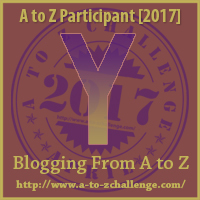
During this A-Z April Challenge, I am exploring the A-Z journey of writing a Novel with examples from Literature.
The Letter of the day is Y
Linking this post to Blogging from A-Zand Blogchatter
Have you read the Letters A, B, C, D, E, F, G, H I J K L M
Published on April 29, 2017 02:47
April 28, 2017
X-Ray Vision for Editing
Once we finish polishing the final draft of the novel, the next process is submitting it to an editor for in-depth editing. This is the final and most important step in the creation of the novel.
 Image Source
Image Source
The editor we employ needs to understand what we want to convey through our book.I have read books where the editing was pathetic.
Recently, I beta-read a book after its final draft and found it wonderful. When the book got published, it had lost all its magic. During the editing process, in order to conform to their word count limits, the editor had cut out many scenes which were crucial to the story and gave depth to the characters. I felt so bad for the writer.
Another book I beta-read and gave feedback as having many excesses came out like a shining gem after being edited by a brilliant editor.
This kind of X-ray vision is what we seek in an editor. The ability to step into the shoes of the writer and reader simultaneously to understand both the perspectives. The editor needs to use his/her X-ray vision to study the following details.What does the writer want to convey in the various scenes? Will the reader understand what the writer wants to convey? Is the scene necessary? Is the writing concise and apt?Is the prose grammatically correct?Are there plot holes?Are all the threads closed at the end of the book?Are the characters three dimensional?Is the showing and telling balanced?Is the word count appropriate for the genre?
Editing is categorized into developmental editing, line editing, copyediting, and proofreading. Usually, in a publishing firm, different editors are in charge of each of these tasks.
Developmental editing looks at the big picture and analyses the entire story for inconsistencies in the story arc, character arc, plot holes etc.
Line editing is the editing at a paragraph level where each paragraph is given attention to and scrutinized.
Copyediting looks after the grammar, usage and consistency issues.
Proofreading addresses how things look on the page. Typos, repeated words etc are weeded out.
Kill your darlings is the favorite phrase of the editors. But the writer has to have faith in his/her story and the final word should always be theirs. The darlings need not die always.
We should not allow any editor to mutilate our creations. If they enhance our writing with good editing, well and good. But if they strip down the essentials, it is time to put your foot down.
As the writer of the story, we often have the characters fully developed in our mind. We often know what drives them, their likes and dislikes.
In order to show them in their true magnificence, we often add scenes which flesh them out on the pages. An editor might think they are not necessary.
If it so happens, explain why you did it and why the scene is important. If the editor can convince you why it is not needed, then go with it.
Otherwise, stick to your opinion and convince them why it is necessary with valid arguments.
After all, it is your story and you should tell it your way.
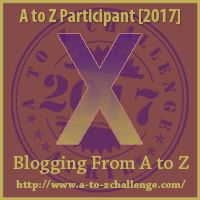
During this A-Z April Challenge, I am exploring the A-Z journey of writing a Novel with examples from Literature.
The Letter of the day is X
Linking this post to Blogging from A-Zand Blogchatter
Have you read the Letters A, B, C, D, E, F, G, H I J K L M O P Q R S T U V and W?
 Image Source
Image SourceThe editor we employ needs to understand what we want to convey through our book.I have read books where the editing was pathetic.
Recently, I beta-read a book after its final draft and found it wonderful. When the book got published, it had lost all its magic. During the editing process, in order to conform to their word count limits, the editor had cut out many scenes which were crucial to the story and gave depth to the characters. I felt so bad for the writer.
Another book I beta-read and gave feedback as having many excesses came out like a shining gem after being edited by a brilliant editor.
This kind of X-ray vision is what we seek in an editor. The ability to step into the shoes of the writer and reader simultaneously to understand both the perspectives. The editor needs to use his/her X-ray vision to study the following details.What does the writer want to convey in the various scenes? Will the reader understand what the writer wants to convey? Is the scene necessary? Is the writing concise and apt?Is the prose grammatically correct?Are there plot holes?Are all the threads closed at the end of the book?Are the characters three dimensional?Is the showing and telling balanced?Is the word count appropriate for the genre?
Editing is categorized into developmental editing, line editing, copyediting, and proofreading. Usually, in a publishing firm, different editors are in charge of each of these tasks.
Developmental editing looks at the big picture and analyses the entire story for inconsistencies in the story arc, character arc, plot holes etc.
Line editing is the editing at a paragraph level where each paragraph is given attention to and scrutinized.
Copyediting looks after the grammar, usage and consistency issues.
Proofreading addresses how things look on the page. Typos, repeated words etc are weeded out.
Kill your darlings is the favorite phrase of the editors. But the writer has to have faith in his/her story and the final word should always be theirs. The darlings need not die always.
We should not allow any editor to mutilate our creations. If they enhance our writing with good editing, well and good. But if they strip down the essentials, it is time to put your foot down.
As the writer of the story, we often have the characters fully developed in our mind. We often know what drives them, their likes and dislikes.
In order to show them in their true magnificence, we often add scenes which flesh them out on the pages. An editor might think they are not necessary.
If it so happens, explain why you did it and why the scene is important. If the editor can convince you why it is not needed, then go with it.
Otherwise, stick to your opinion and convince them why it is necessary with valid arguments.
After all, it is your story and you should tell it your way.

During this A-Z April Challenge, I am exploring the A-Z journey of writing a Novel with examples from Literature.
The Letter of the day is X
Linking this post to Blogging from A-Zand Blogchatter
Have you read the Letters A, B, C, D, E, F, G, H I J K L M O P Q R S T U V and W?
Published on April 28, 2017 00:49
April 27, 2017
What If Questions

What if questions govern a writer’s life in a multitude of ways.
To begin with, it helps a writer create.
A story idea might originate from a simple ‘what if’ question. A spectacular twist in the story gets borne out of a ‘what if’ idea.
The various dimensions of a character become evident as answers to different what if questions. The pace of the story, the character arc, the climax, the ending… every element becomes different from a similar story when the writer attempts to give life to a ‘what if’ idea.
A writer brings in variety and newness into the scene ideas, the dialogues, and the conflicts by asking many what if questions.
What if the villain turned out to be an extraterrestrial? Such a question is bound to change the genre of the story.
What if the characters begin to speak as if they were given different scripts? It can lead to hilarious situations or create conflicts.
What if one of the characters dies unexpectedly? This technique is widely used. ‘Kill your darlings’ is a tactic often adopted by authors when writing a book series. The Harry porter series sees the death of at least one prominent character in each book.
Yet, ‘What if’ questions also hinder creativity. It is one of the main questions that can bring in fear.
Some of the common what if questions that trouble writers right from the beginning of their writing career are:What if I am not meant to be a writer?What if I am not able to complete this novel that I have begun?What if this book turns out to be the worst book ever?What if I face multiple rejections from agents and publishers?What if the book never gets published?What if the readers hate what I write?What if the critics tear my book apart?What if this book doesn’t match the popularity of the previous one?What if I earn peanuts as a writer?
What if… such fears haunt the writer and the result is often ‘Writer’s Block’.
It is for us to decide whether we will use this simple phrase to create a question that will make us create or block our creativity.
Do you think what if questions are powerful?

During this A-Z April Challenge, I am exploring the A-Z journey of writing a Novel with examples from Literature.
The Letter of the day is V
Linking this post to Blogging from A-Zand Blogchatter
Have you read the Letters A, B, C, D, E, F, G, H I J K L M
Published on April 27, 2017 03:19
April 26, 2017
5 Surefire Ways to Improve Your Writing Vocabulary
Being a non-native English speaker belonging to a small village in Kerala, my vocabulary when I started to write was not very vast. But I am a word hunter in love with words. Whenever I visit blogs or read books by native English speakers, I admire their writing skills and vocabulary prowess.
 Image Source
Image SourceI yearn to acquire their writing skills. I know it is not an easy job.
So, every day I spend time working on my vocabulary and writing skills.
I believe writing is a craft that can be improved only by working on it on a regular basis.
Here is a list of activities I adopted to build my vocabulary.
1) Join a website dedicated to increasing Vocabulary Skills:
My favorite website to study words is Vocabulary.com. You can join the website for free using your Google or Facebook profile. They have word games and lists which help to learn new words. Each list has a set of activities where we can study the various words to understand their meaning and spelling. They give the origin, word meaning through examples and also the nearest synonym. My go to list there is Literature. In this list, the words listed are selected chapters from many famous books.
2) Install a dictionary/thesaurus app on your phone or tablet
Whenever you encounter a new word, instead of guessing the meaning, check the word in your thesaurus app. Most apps save the list of words you search and hence you can revisit these words as and when you wish. The app I use is Merriam-Webster. It has a feature called word of the day which introduces new words to the user daily.
3) Read more every day:
Reading is the easiest way to encounter new words. The more you read, greater your word stock.
4) Write every day:
Note down the words you learn and then use them in your writing until you become familiar with their usage and meaning. Create a word journal and make it visually memorable.
5) Edit your writing
Another easy way to improve your vocabulary is to edit your writing. While you are at it,Replace repeated words with their nearest synonym. In the process, you will surely discover newer words to express yourself.Find a single word to replace multiple words. This helps to tighten your prose.
Example: to move aimlessly from place to place can be replaced by the word ramble.
How do you improve your vocabulary?
Do tell me in the comments section.
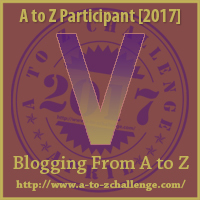
During this A-Z April Challenge, I am exploring the A-Z journey of writing a Novel with examples from Literature.The Letter of the day is V
Linking this post to Blogging from A-Zand Blogchatter
Have you read the Letters A, B, C, D, E, F, G, H I J K L M
Published on April 26, 2017 02:58
April 25, 2017
Unique Selling Proposition
Unique Selling Proposition or USP is very important when you come to the querying, publishing, and marketing phase of your book.
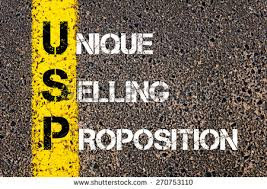 Image Source
Image SourceBy comparing similar published works to your work-in-progress, you can understand what is different about your book. What is the ‘aha’ factor that makes your book better? Why would a reader buy your book when the bookshelves are loaded with titles with similar storylines?
By emphasizing on the USP of your book, we can make the agents/editors understand what makes our work stand out.
To find out the USP of the book, you need to answer the following questions about your work.What is the genre of your book? Is the type of story you are writing common in the genre your book falls in?Who is your target reader? What is the age-group? Male or female? For example, romance works are mainly targeted at females in the age group of 25-45.What are the factors in your book that will appeal to your target reader?How is your book different compared to similar books?What is the take away for your reader?
1 Next, you have to write a one-sentence summary of your book. Are you wondering why?
Imagine you have to pitch your core book idea book to an agent/editor or marketer you accidently bump into in an elevator? You don’t have much time, remember?
If you can make this ‘Elevator Pitch’ very impressive and interesting, you might soon end up with a book contract. This is your book's USP.
This one sentence summary can come in handy when you write a query letter, design banners for promotions and also while writing the book blurb.
If you want to know more about writing a brilliant elevator pitch, read this article.
Examples of USP:
Harry Potter: Adventures of an ordinary boy who discovers he is actually a wizard destined to fight the evil dark wizard Voldemort to save the wizarding world.
An easy method to find the USP of your book.
Find some keywords and phrases that will describe you workWrite down a few sentences using these keywords and phrasesRead them as if you are the target audience. Will you read such a book? Modify accordingly.
Now, it is your turn.
What is the USP of your book?
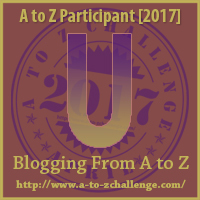
During this A-Z April Challenge, I am exploring the A-Z journey of writing a Novel with examples from Literature.The Letter of the day is U
Linking this post to Blogging from A-Zand Blogchatter
Have you read the Letters A, B, C, D, E, F, G, H I J K L M O P Q R S and T?
Published on April 25, 2017 05:08
April 24, 2017
20 Themes in Fiction Writing with Examples
The theme of a story/novel is its central idea, pulse or the message that the author wants to convey to the reader. Books can have multiple themes.
For example, the entire Harry Potter series explore the theme of good versus evil. We root for the good wizards like Harry, Dumbledore, Hermione, Ron, Mr. Weasley etc while they fight the dark wizards led by Lord Voldemort. It also has the theme of Love. Love is proclaimed as the most powerful magic which even the darkest magic can’t defeat. Harry is alive only because his mother’s love protects him from harm. She sacrificed her own life to protect him.
The following quote explains this theme of love:“Do not pity the dead, Harry. Pity the living, and, above all those who live without love.”~ excerpt from Harry Potter and the Deathly Hallows by JK Rowling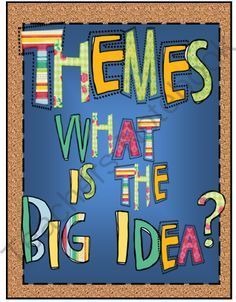 Image Source
Image Source
What are some of the common themes explored in fiction writing?
Most books will have a central theme around which the entire story revolves. Let us check some examples.
Ambition: In ‘Macbeth’ Shakespeare tells the tale of the unbridled ambition of Macbeth to become the King which eventually leads to his downfall.Betrayal: The central theme of ‘The Invisible Man’ by HG Wells is the betrayal by the people and ideals that the protagonist trusts.Coming of age: Harper Lee’s ‘To Kill a Mocking Bird’ is a coming of age novel along with being a book that deals with racism and atrocities suffered by minorities. It sensitively portrays the life of a young boy who grows up during difficult times through shocking yet realistic events.Courage: ‘Hunger Games’ by Susan CollinsDeception: ‘Much ado about Nothing’ by Shakespeare is based upon planned deceptions, both malevolent and benign.Discovery: ‘The Tempest’ by Shakespeare. After the characters get lost on the island, they discover many truths.Escape: In ‘The Glass Menagerie’ by Tennessee Williams the theme of escape is used to drive the play forward. The characters are driven by the hope that escape is possible.Death: ‘Hamlet’ by Shakespeare.Fear: The Lord of the Flies by William GoldingFriendship: Good versus evil: Harry Potter SeriesIsolation: Robinson CrusoeJealousy: Othello by ShakespeareLove conquers all: The Notebook by Nicholas SparkLust and Love: The Great Gatsby by F. Scot FitzgeraldPower: The Godfather by Mario PuzoPrejudice: Pride and Prejudice by Jane AustenProdigal Son/Daughter: Prodigal Daughter by Jeffrey ArcherSpirituality: Siddhartha by Herman HesseSurvival: The Hunger Games
What is your favorite theme in fiction?
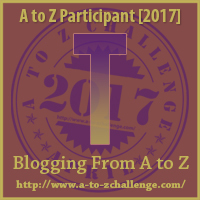
During this A-Z April Challenge, I am exploring the A-Z journey of writing a Novel with examples from Literature.The Letter of the day is T
Linking this post to Blogging from A-Zand Blogchatter
Have you read the Letters A, B, C, D, E, F, G, H I J K L M
For example, the entire Harry Potter series explore the theme of good versus evil. We root for the good wizards like Harry, Dumbledore, Hermione, Ron, Mr. Weasley etc while they fight the dark wizards led by Lord Voldemort. It also has the theme of Love. Love is proclaimed as the most powerful magic which even the darkest magic can’t defeat. Harry is alive only because his mother’s love protects him from harm. She sacrificed her own life to protect him.
The following quote explains this theme of love:“Do not pity the dead, Harry. Pity the living, and, above all those who live without love.”~ excerpt from Harry Potter and the Deathly Hallows by JK Rowling
 Image Source
Image SourceWhat are some of the common themes explored in fiction writing?
Most books will have a central theme around which the entire story revolves. Let us check some examples.
Ambition: In ‘Macbeth’ Shakespeare tells the tale of the unbridled ambition of Macbeth to become the King which eventually leads to his downfall.Betrayal: The central theme of ‘The Invisible Man’ by HG Wells is the betrayal by the people and ideals that the protagonist trusts.Coming of age: Harper Lee’s ‘To Kill a Mocking Bird’ is a coming of age novel along with being a book that deals with racism and atrocities suffered by minorities. It sensitively portrays the life of a young boy who grows up during difficult times through shocking yet realistic events.Courage: ‘Hunger Games’ by Susan CollinsDeception: ‘Much ado about Nothing’ by Shakespeare is based upon planned deceptions, both malevolent and benign.Discovery: ‘The Tempest’ by Shakespeare. After the characters get lost on the island, they discover many truths.Escape: In ‘The Glass Menagerie’ by Tennessee Williams the theme of escape is used to drive the play forward. The characters are driven by the hope that escape is possible.Death: ‘Hamlet’ by Shakespeare.Fear: The Lord of the Flies by William GoldingFriendship: Good versus evil: Harry Potter SeriesIsolation: Robinson CrusoeJealousy: Othello by ShakespeareLove conquers all: The Notebook by Nicholas SparkLust and Love: The Great Gatsby by F. Scot FitzgeraldPower: The Godfather by Mario PuzoPrejudice: Pride and Prejudice by Jane AustenProdigal Son/Daughter: Prodigal Daughter by Jeffrey ArcherSpirituality: Siddhartha by Herman HesseSurvival: The Hunger Games
What is your favorite theme in fiction?

During this A-Z April Challenge, I am exploring the A-Z journey of writing a Novel with examples from Literature.The Letter of the day is T
Linking this post to Blogging from A-Zand Blogchatter
Have you read the Letters A, B, C, D, E, F, G, H I J K L M
Published on April 24, 2017 00:35
April 21, 2017
Showing and Telling : The JK Rowling Way
One of the most frequent writing advice we hear while setting about to write a story is the phrase ‘show don’t tell’.What does that mean?
SHOWING makes the reader share the experience of the characters by evoking their senses making it a physical and emotional experience. The descriptions evoke the feelings of smell, touch, see and hear, and make the reader experience it together with the characters.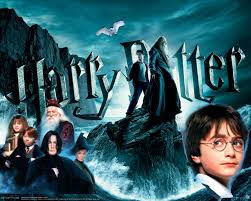 Image Source
Image Source
The Harry Potter books are mostly entirely 'show'. We the readers are there with Harry at every step of the way and we see what he sees. The reader experiences the terror, excitement, and happiness that come his way.
Example:
“I'm Draco Malfoy, I'm Draco, I'm on your side!"Draco was on the upper landing, pleading with another masked Death Eater. Harry Stunned the Death Eater as they passed: Malfoy looked around, beaming, for his savior, and Ron punched him from under the cloak. Malfoy fell backward on top of the Death Eater, his mouth bleeding, utterly bemused."And that's the second time we've saved your life tonight, you two-faced bastard!" Ron yelled.” ~JK Rowling, Excerpt from Harry Potter and the Deathly Hallows.
TELLING is the old-fashioned way of storytelling, where the reader gets told exactly where the characters are, and what's going on.
Example: Harry felt, afterward, that he should have known it was all too good to last.
Using dialogue is the easiest way to slip into the ‘Show’ mode because the dialogue is considered as action. While writing dialogues, the common rule is not to use adverbs in the dialogue tags. Like for example.
“Look near the tree at the center of the garden,” she said quietly. Here the adverb ‘quietly’ tells rather than show. In ‘On writing’ Stephen King asks the writer to use adverbs sparingly.
If you check the Harry Potter books, you can see that JK Rowling uses such adverbs frequently. I guess this is because the Harry Potter books were written for the children. The best way to tell a child that someone was speaking in a low voice is to tell them that she/he said quietly.
Even though she breaks the rule this way, she paints a magical world using the elaborate and evocative descriptions and shows the reader the magical world of wizards and witches.
Another technique JK Rowling uses in the Harry Potter books is the usage of a good telling topic sentence.
(A topic sentence is a sentence at the beginning of a paragraph which explains its main idea)
Example: The dungeon was, most unusually, already full of vapors and odd smells. (topic sentence)
~JK Rowling, Excerpt from Harry Potter and the Half-Blood Prince.
Next, she explains this showing how Ron, Hermione and Harry experiences and reacts to these smells and vapors. Example: They chose the table nearest a gold-colored cauldron that was emitting one of the most seductive scents Harry had ever inhaled: Somehow it reminded him simultaneously of treacle tart, the woody smell of a broomstick handle, and something flowery he thought he might have smelled at the Burrow.
~JK Rowling, Excerpt from Harry Potter and the Half-Blood Prince.
Throughout the books, JK Rowling uses this technique effectively by mixing Show and Tell techniques.
Do you follow the ‘Show, don’t tell’ rule religiously?
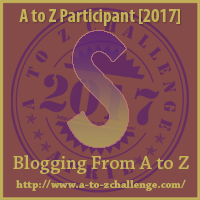
During this A-Z April Challenge, I am exploring the A-Z journey of writing a Novel with examples from Literature.
The Letter of the day is S
Linking this post to Blogging from A-Zand Blogchatter
Have you read the Letters A, B, C, D, E, F, G, H I J K L M
SHOWING makes the reader share the experience of the characters by evoking their senses making it a physical and emotional experience. The descriptions evoke the feelings of smell, touch, see and hear, and make the reader experience it together with the characters.
 Image Source
Image SourceThe Harry Potter books are mostly entirely 'show'. We the readers are there with Harry at every step of the way and we see what he sees. The reader experiences the terror, excitement, and happiness that come his way.
Example:
“I'm Draco Malfoy, I'm Draco, I'm on your side!"Draco was on the upper landing, pleading with another masked Death Eater. Harry Stunned the Death Eater as they passed: Malfoy looked around, beaming, for his savior, and Ron punched him from under the cloak. Malfoy fell backward on top of the Death Eater, his mouth bleeding, utterly bemused."And that's the second time we've saved your life tonight, you two-faced bastard!" Ron yelled.” ~JK Rowling, Excerpt from Harry Potter and the Deathly Hallows.
TELLING is the old-fashioned way of storytelling, where the reader gets told exactly where the characters are, and what's going on.
Example: Harry felt, afterward, that he should have known it was all too good to last.
Using dialogue is the easiest way to slip into the ‘Show’ mode because the dialogue is considered as action. While writing dialogues, the common rule is not to use adverbs in the dialogue tags. Like for example.
“Look near the tree at the center of the garden,” she said quietly. Here the adverb ‘quietly’ tells rather than show. In ‘On writing’ Stephen King asks the writer to use adverbs sparingly.
If you check the Harry Potter books, you can see that JK Rowling uses such adverbs frequently. I guess this is because the Harry Potter books were written for the children. The best way to tell a child that someone was speaking in a low voice is to tell them that she/he said quietly.
Even though she breaks the rule this way, she paints a magical world using the elaborate and evocative descriptions and shows the reader the magical world of wizards and witches.
Another technique JK Rowling uses in the Harry Potter books is the usage of a good telling topic sentence.
(A topic sentence is a sentence at the beginning of a paragraph which explains its main idea)
Example: The dungeon was, most unusually, already full of vapors and odd smells. (topic sentence)
~JK Rowling, Excerpt from Harry Potter and the Half-Blood Prince.
Next, she explains this showing how Ron, Hermione and Harry experiences and reacts to these smells and vapors. Example: They chose the table nearest a gold-colored cauldron that was emitting one of the most seductive scents Harry had ever inhaled: Somehow it reminded him simultaneously of treacle tart, the woody smell of a broomstick handle, and something flowery he thought he might have smelled at the Burrow.
~JK Rowling, Excerpt from Harry Potter and the Half-Blood Prince.
Throughout the books, JK Rowling uses this technique effectively by mixing Show and Tell techniques.
Do you follow the ‘Show, don’t tell’ rule religiously?

During this A-Z April Challenge, I am exploring the A-Z journey of writing a Novel with examples from Literature.
The Letter of the day is S
Linking this post to Blogging from A-Zand Blogchatter
Have you read the Letters A, B, C, D, E, F, G, H I J K L M
Published on April 21, 2017 12:00
April 20, 2017
15 Steps for Rewriting your First Draft
 Image Source
Image SourceFirst drafts are often brain-vomit and hence crappy. You can polish those initial ideas with your own editing skills and make it shine.
Here are 15 easy steps to adopt while rewriting your first draft:
Take a break from the first draft after you complete it. It can be a few weeks to few months. Come back to it later with fresh eyes and read it like a reader. You will notice many typos, plot holes, and redundancies. Mark them down and fix them.Run it through a grammar check software. Grammarly, MS word or any other free/paid online/offline software can come to your aid.Weed out the filter words, repeated words, and adverbs. Look out for these filter words that we tend to use often.Check the point of views you adopted. Are there errors in the way you have written the scenes? Check these tips to avoid them.If you want to make major changes to the first draft, create a re-writing schedule and outline the details you want to incorporate.Do not hurry through the rewriting schedule. Do it with as much enthusiasm as you had dedicated to your first draft.Check the pacing of your story. Use the exploding a moment method to slow down the pace in important scenes.Write detailed character sketches and incorporate these details to flesh out your characters.Re-establish the goals and motivations of your characters. After creating a detailed character sketch, you might want to incorporate some major changes in your characters' original goals.Did the characters undergo changes in your story? Write a detailed character arc.Are the transitions between the scenes smooth?Are there anachronisms, research errors or similar mistakes? Correct them.It is always good to use a simpler word instead of an uncommon word. Replace complex words with their simpler alternatives. Apps like the Hemingway Editor can help you with this.Check whether you can start the novel at a new place in your draft by moving around the scenes a bit. You need to create a hook as effectively as you can. You may have to rewrite the first chapter entirely or remove it.Send the finished second draft to your trusted beta reader for feedback. Once you get it back, if you find the suggestions worthwhile, adopt them. Repeat.
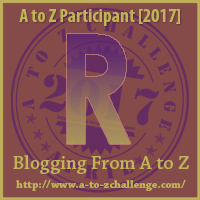
During this A-Z April Challenge, I am exploring the A-Z journey of writing a Novel with examples from Literature.
The Letter of the day is R
Linking this post to Blogging from A-Zand Blogchatter
Have you read the Letters A, B, C, D, E, F, G, H I J K L M
Published on April 20, 2017 13:00



